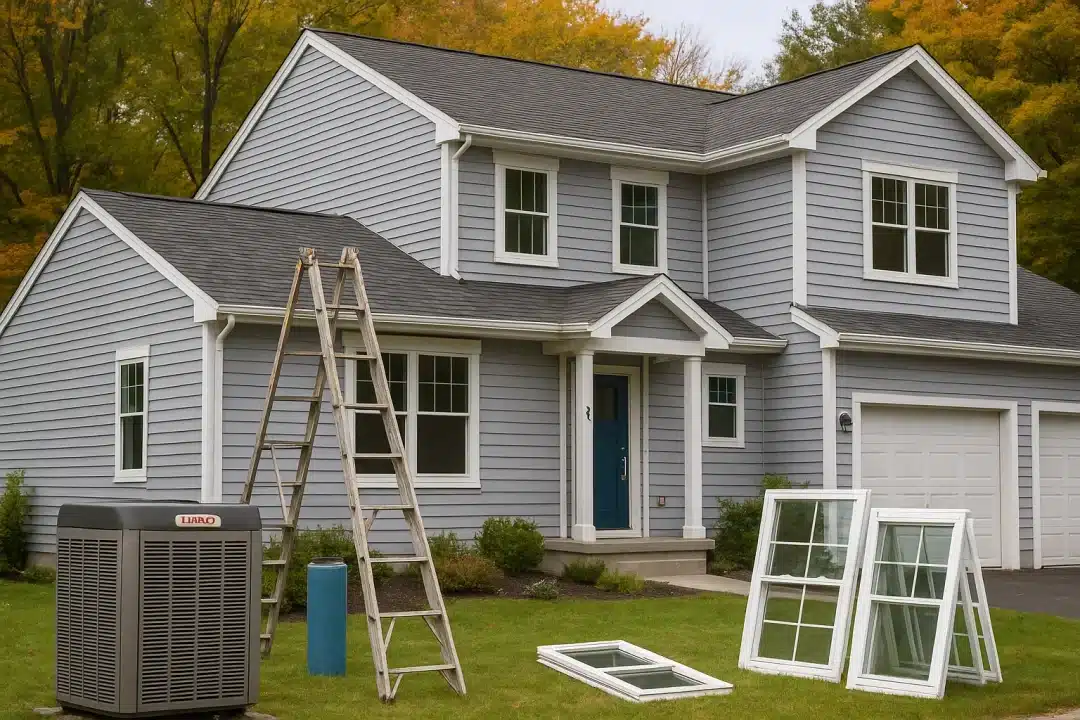
Homeowners can now claim up to $3,200 annually in federal tax credits for energy-efficient home improvements — and the savings start in 2025.
As utility bills rise and energy inflation squeezes household budgets, the IRS is reminding Americans that the Energy Efficient Home Improvement Tax Credit offers powerful financial relief through 2032. Backed by the 2022 Inflation Reduction Act, the program allows homeowners to deduct 30% of the cost of eligible energy-saving upgrades — covering everything from heat pumps and insulation to windows and home energy audits.
🔧 What Is the Energy Efficient Home Improvement Tax Credit?
The Energy Efficient Home Improvement Tax Credit is a nonrefundable federal tax credit of up to $3,200 per year for qualifying upgrades that make homes more energy-efficient. It applies to existing primary residences in the United States and is available annually through December 31, 2032.
There are two main parts to the credit:
- $1,200 maximum for items like insulation, energy-efficient windows, doors, skylights, and home energy audits.
- $2,000 maximum for high-efficiency upgrades such as heat pumps, heat pump water heaters, biomass stoves, and advanced boilers.
✅ What Qualifies for the $3,200 Tax Credit?
To claim the credit, improvements must meet energy efficiency standards and be installed (not just purchased) within the tax year. Starting in 2025, homeowners must include a Product Identification Number (PIN) from the manufacturer when filing IRS Form 5695.
Qualifying improvements include:
- Heat pump HVAC systems and heat pump water heaters (up to $2,000)
- Insulation and air sealing materials (up to $1,200)
- Energy-efficient windows (up to $600) and doors (up to $500)
- Home energy audits by certified professionals (up to $150)
- Electrical panel upgrades to support high-efficiency systems (up to $600)
Only existing homes used as a primary residence qualify. New builds and rental properties used exclusively for business do not. If the home is partially used for business (20% or less), you can still claim the full credit.
💰 How the $3,200 Tax Credit Works
- The credit is nonrefundable, meaning it reduces your tax liability but does not result in a cash refund.
- You can claim the credit each year through 2032 — there is no lifetime limit.
- Rebates or subsidies from manufacturers or utility companies must be subtracted from your total cost before calculating the credit.
- Local or state-level incentives may be available in addition to the federal tax credit.
📅 Why 2025 is the Time to Upgrade Your Home
With energy prices still elevated and inflation persisting, 2025 is a smart year to take action. The IRS confirms that homeowners who install qualifying upgrades can claim the full credit on their next tax return — so long as the equipment is installed in 2025 and includes a PIN from a qualified manufacturer.
This credit is part of a larger federal push to reduce emissions, modernize homes, and cut long-term energy costs for American households. For many, it’s the extra incentive needed to finally replace outdated systems with more efficient — and more affordable — technology.
🟢 Bottom Line For Homeowners
The Energy Efficient Home Improvement Tax Credit is one of the most generous homeowner incentives available in 2025. With up to $3,200 in annual credits and the ability to claim the full amount every year through 2032, there has never been a better time to upgrade your home.
Be sure to keep receipts, installation dates, and manufacturer product IDs — and talk to a tax advisor to maximize your claim.

